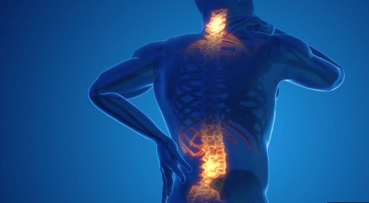 We will all likely have back pain at some point in our lives. Yours may be caused by a car accident, follow a night of poor sleep on a bad mattress, or a mysterious origin. Regardless, it will likely happen.
We will all likely have back pain at some point in our lives. Yours may be caused by a car accident, follow a night of poor sleep on a bad mattress, or a mysterious origin. Regardless, it will likely happen.Once back pain visits, it can feel like it will never go away - either you’ve been dealing with it for a long time, or you have that friend or relative who had an accident and their back just wasn’t ever the same.
In reality, most injuries resolve and most back pain can go away. So why do so many of the people who get back pain seem to wind up dealing with it for the rest of their lives?
To be sure, some types of injuries will cause permanent, painful conditions. Fortunately, the most common causes of back pain, which are either postural-mechanical (caused by poor body mechanics or ergonomics associated with activity you do often) or from a sprain or strain of the muscles of the back, can be resolved by treatment.
Why does back pain seem to evolve into chronic conditions when it would seem like the opposite should be true?
In the instance of postural-mechanical pain, eliminating the pain is usually a simple matter of identifying the offending activity or item. The culprit of the discomfort could easily be poor body mechanics in the gym, or even an unsuitable piece of furniture. Patients can often do their own investigation to narrow the list of possible origins. Still, a physician or physical therapist may prove helpful for guidance. These practitioners can provide a panoramic view with the patient to assess their lifestyle and all of the factors that contribute to their continued back pain. A consultation can really help; as the saying goes, “Dr. Google never went to medical school.”
Emerging from pain after sprain and strain can be somewhat more complicated. The actual muscle injury usually takes a finite period of time to heal - most typically 4-6 weeks - but frequently after this period of healing, patients remain in pain. The key to finding a path out of pain lies in understanding why this phenomenon occurs.
I have a model in clinical practice to explain why this happens, and to help correct the underlying problem that causes pain to continue even after an injury has healed. I call this model the Learned Neurological Response - or LNR.
Imagine a simple daily activity, such as brushing your teeth. When you first began to brush your teeth as a child, you needed to learn how. Left-right-left-right, up-down-up-down. You put conscious effort until you mastered the task. Eventually, toothbrushing became something you just did. You no longer need to think about how to move your arms, wrist and even lips and jaw. You established habitual neural pathways and it became a series of actions you essentially perform on autopilot.
Now imagine you’ve sprained one of the muscles in your shoulder - a muscle you needed to use while brushing your teeth. Now the morning routine of brushing your teeth has become very painful. You either consciously (perhaps by switching hands) or subconsciously (you subtly changed the position of your arm to alleviate your pain) accommodate the pain. In either case, you’ve disrupted the normal mechanics of this regular activity, moving stress to places it shouldn’t be, causing secondary injuries and pain. This establishes new neural pathways; these altered mechanics become difficult to unlearn even after the muscles in your shoulder have apparently healed.
Taking the time to unlearn these faulty habits is the only way to override these pathways and rid yourself of pain.
If you continue to experience back pain despite a normal examination and even unremarkable radiological studies, begin to think about what things you may have changed in response to a physical injury. Consider what you might do to get back to a normal, uncompromised way of daily living. A conversation with your physician may help you narrow things down and get you back to normal function.

